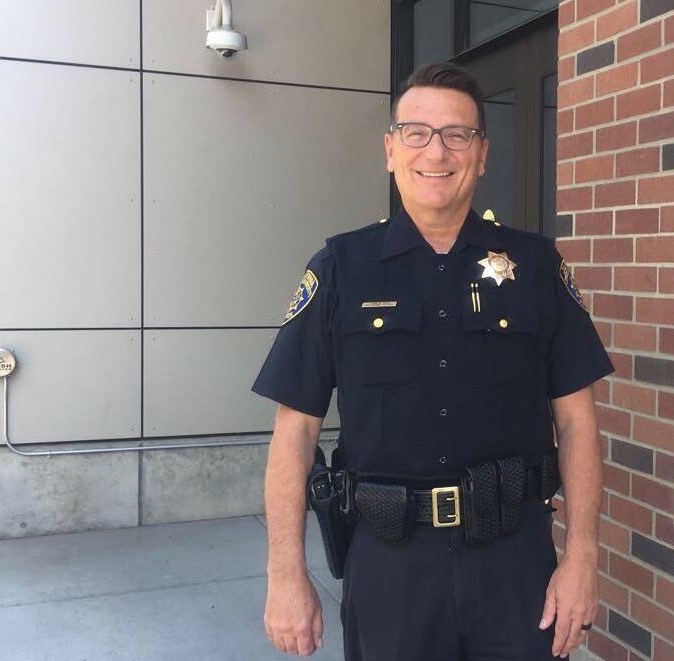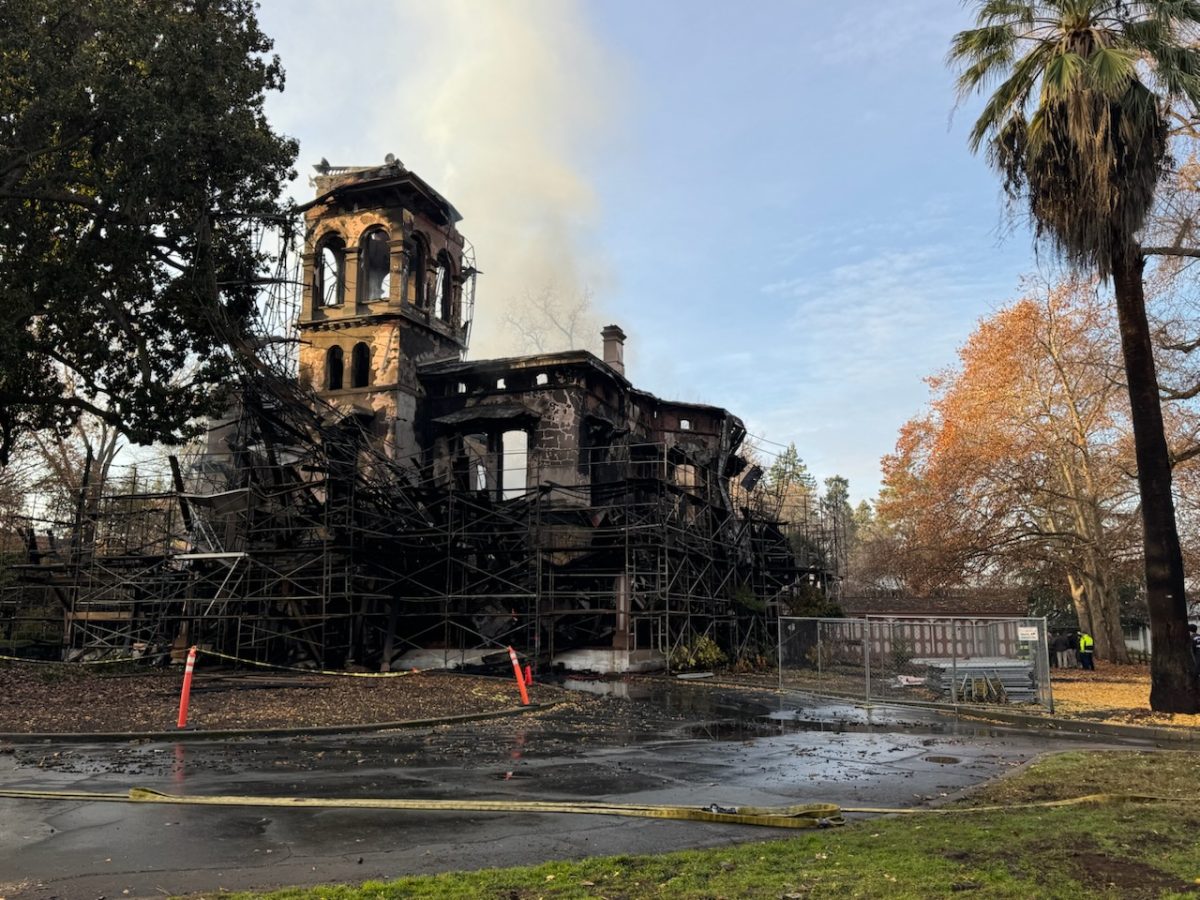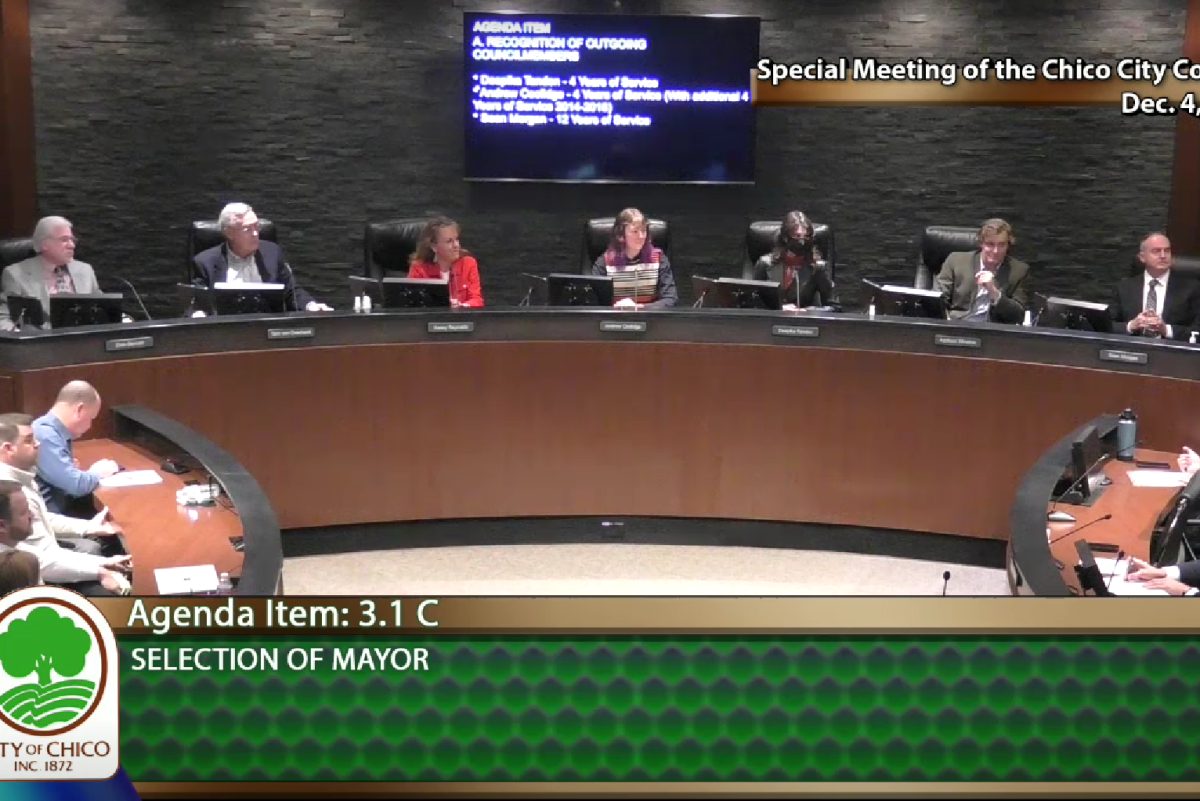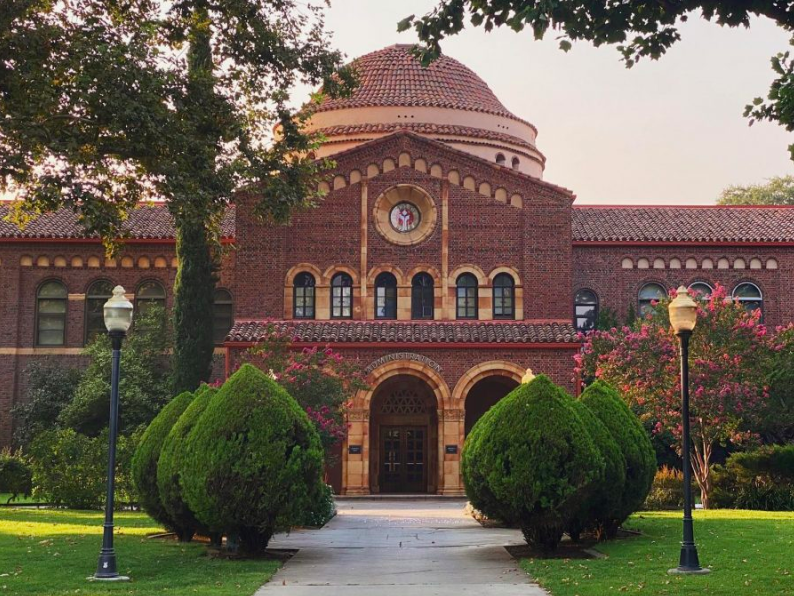Student safety has been in the public eye, with two incidents involving a sudden, improvised evacuation in the Meriam Library and a suspicious message carved into the wall of a bathroom in the library.
While both cases were deemed non-threats, students have been criticizing the communication Chico State’s University Police Department has with students. But the problem may not be the communication from Chico State Police — in fact, the issue may be that there is no “problem,” UPD explains to the Orion.
On Nov 5., when students found a message written on a bathroom stall of the library, “THERE SHOOTNG WENDSDAY,” the official Twitter account of Chico State announced the next day, Nov. 6 at 1:01 p.m. , “We are aware of graffiti in Meriam Library containing non-specific threat. University Police are investigating. Update in 30min.”
A campus-wide email was sent out to students the same day around 5 p.m., explaining that UPD had determined that the graffiti’s message was not specific or credible, and did not constitute a threat.
Some student reactions to UPD showed disappointment at the transparency of the police department and reliance on Chico State’s University Communications department to communicate incidents to the student body.
UPD explained that although the incident was acknowledged by Chico State authorities and administration, the situation did not lead to students receiving any immediate alert because the threat in the case — which at the time was being examined — was not credible and any alarm with current information would endanger the integrity of the investigation.
“We’re not going to classify that as a threat and in that initiate an emergency notification to the university,” John Reid, Chief of UPD, said. “We can’t issue emergency notifications without a credible emergency identified because then you’re heightening alarm and running into a “cry wolf” kind of philosophy.”
While UPD understands that a number of students remained skeptical of the threat, Chief Reid hopes that students would understand that those who are trained and experienced will determine the validity of the threat and have a process to carry out, in the event that the threat is considered plausible — including a university-wide alert.
“We have quantitative tools like rubrics where we input facts and circumstances into a metric that produces a score determining a greater level threat,” Reid said. “The only information we had was, “There shooting Wednesday,” — we don’t know who did that or why they did it, if “shooting” meant shooting a video of shooting a gun, we don’t know if “Wednesday” means this Wednesday next Wednesday a Wednesday or even at the library just because the message was found at the library.”
Reid explained the crisis communication protocol, which involves putting out information through a single source — the public information officer, Sean Murphy — is to ensure that it is efficient and effective and that people know who to talk to while police are working on those situations.
Had UPD determined the threat was credible, they would have sent out an emergency motivation through Chico State Alerts to let the community know, he said. UPD is still investigating this incident.
“It’s still a crime but we don’t need to close the library or campus down,” he said.
“Folks expect an impossible standard. It’s news but it’s not a threat. Within 24 hours of the incident, we had social media and campus wide information on it. If it had been determined a threat, this would not have been acceptable.”
Chief Reid added that students should be mindful of the assumptions and incomplete information students read from their colleagues on social media.
“We as a society are dealing with a new environment that is making information released by government agencies very difficult because a narrative is already out there “going viral” and oftentimes that narrative becomes the reality for many people,” he said. “We’ve seen a number of incidents where we have put out information that says ‘that’s not true, that’s not accurate” and folks don’t believe that because what they saw or read on social media and I can’t control that. Anybody can pick up their phone and put up whatever they want on social media.”
Chief Reid explained the measures taken in the event where a report is taken, such as on Oct. 20 when students were suddenly evacuated from the library without warning after a false alarm of a student carrying a gun.
“There has never been a threat in the library,” Reid said. “The first incident was clearly not a threat and not even reported as a threat but an individual who seemed odd, made hand gestures that looked like he was holding a gun but there was no gun reported.”
Reid said it was the library staff that “made the determination that this was a threat and to begin to evaluate the library, UPD had nothing to do with that but we met with the staff and council them that we did not think that this was a good practice.”
“As security leaders of this school, it would be our responsibility to go to that department and speak to them after the fact to explain that we didn’t think it was a good call and here’s why,” he said. “Unless it’s immediately evident, UPD should make that call because we’re trained to do that. The library manager made that judgement call and she did what she thought was the proper thing to do. This could have been their first experience with this, and maybe that was the wrong call, but humans make mistakes every day.”
While UPD has ever worked with The Orion to publicize incident notifications, Reid suggested one solution for future incidents occurring on campus could include a daily information bulletin. If approved, it would include statements and information released for incidents reported that will be distributed through email for those who choose to subscribe.
Kimberly Morales can be reached at [email protected] or @kimberlymnews on Twitter.









